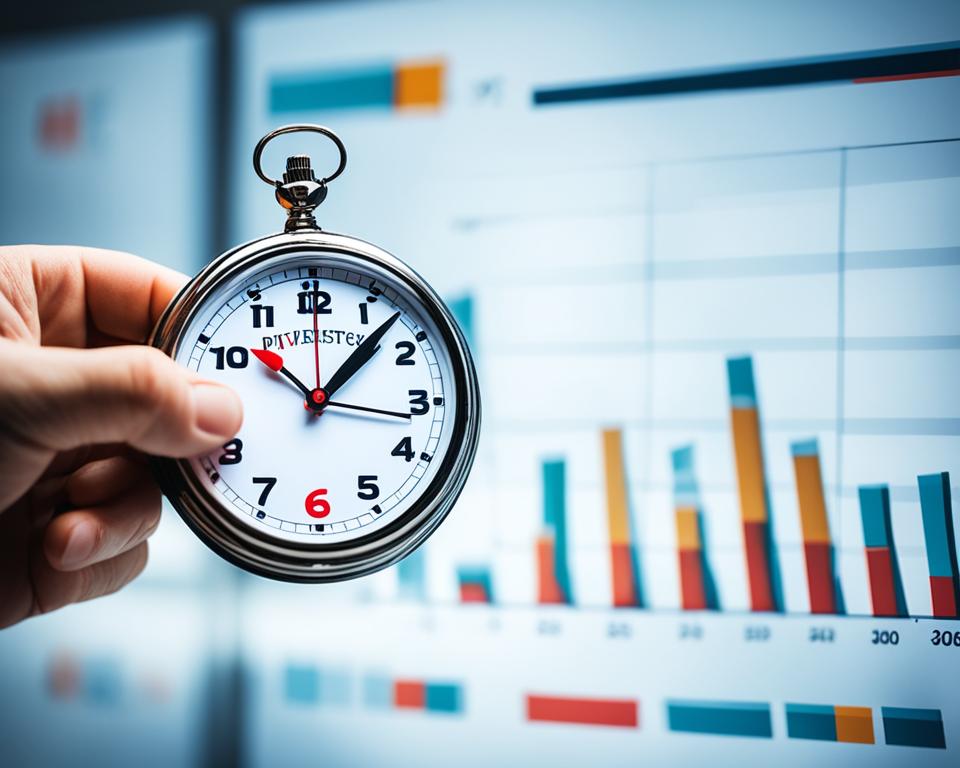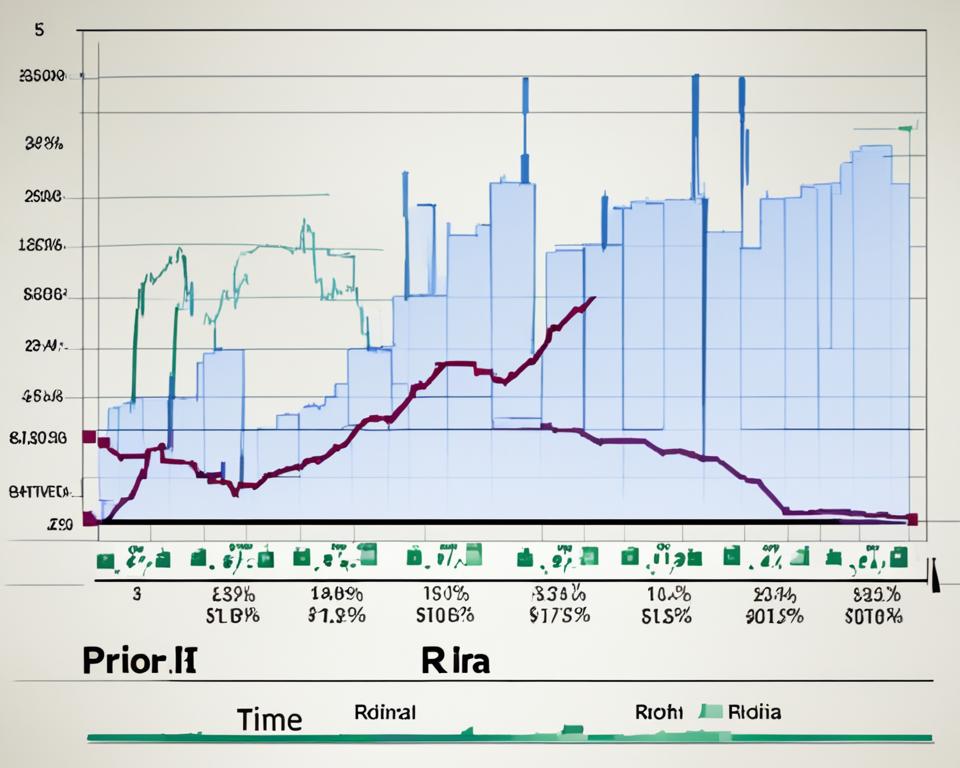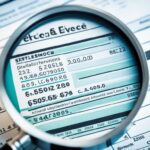In the world of investment, the idea of sustainable dividend stock carries significant importance for those taking a long-term view. But what exactly establishes the characteristics of a sustainable dividend stock? Suffice to say, it entails more than just steady dividend payouts.
To truly consider a dividend stock as sustainable, it must exhibit a few key characteristics. These incorporate elements like a history of rising earnings per share (EPS), a high return on equity, and a strategic balance in its dividend payout ratio. Such traits signal the organization’s strength and foresight in managing its finances and rewarding its shareholders without jeopardizing its future growth.
When it comes to evaluating dividend stock sustainability, understanding these factors forms the core of your assessment. Join us further as we delve deeper into the makings of a truly sustainable dividend stock.
Key Takeaways
- Sustainable dividend stocks display key characteristics like consistent growth in EPS and high return on equity.
- The company’s ability to balance its dividend payout ratio is essential in maintaining sustainability.
- An understanding of these characteristics is fundamental to evaluate dividend stock sustainability.
- Companies with these traits demonstrate strong financial management and shareholder value.
- Investors focused on long-term dividend sustainability should prioritize stocks displaying these characteristics.
Introduction to Sustainable Dividend Investing
In the realm of investing, sustainability is a keyword that resonates with longevity and resilience. This holds particularly true in the field of dividend investing. The goal of every investor is not just about receiving dividends, but about securing dividends that rise steadily over time, thereby compounding their returns and growing their investment.
How to choose a dividend stock for sustainable returns though? The key lies in understanding various performance indicators that suggest a company’s potency in maintaining and growing dividends in the long run. By integrating these key performance evaluations into their decision-making process, investors can select stocks that are more likely to deliver sustainable dividend growth.
Notably, there are four critical measures to look at:
- Earnings Per Share (EPS) growth: Rising EPS is a positive sign, indicating a company’s increasing profitability. A history of steady EPS growth signals potential dividend sustainability.
- Return on Equity (ROE) stability: A high and stable ROE suggests effective use of shareholders’ equity, which is a crucial factor influencing dividend payments.
- Share count reduction: Companies that buy back their shares reduce the overall share count. This move can enhance EPS and portray confidence, adding to the dividend sustainability.
- Responsible Dividend Payout ratios: A balanced dividend payout ratio, neither too low nor too high, shows the company’s capability to pay dividends consistently without compromising its financial health or growth prospects.
By keeping an eye on these crucial factors and understanding their implications, investors can navigate the investing waters confidently, choosing dividend stocks that promise sustainable returns.
Sustainable dividend investing is not just about picking dividend-paying stocks; it’s about selecting stocks that provide steady dividends which grow over time. Using such a strategy can ensure a regular and growing income stream from the investments, providing financial security in the long-term.
Defining a Sustainable Dividend Stock
Unpacking the term sustainable dividend stock reveals the essence of what investors seek: a steady stream of dividends paid over a long period without shaking the underlying financial stability or future growth prospects of the issuing company. To expand one’s understanding of this key investment asset, it is crucial to appreciate the role each component plays in creating a sustainable dividend environment.
The analysis of sustainable dividend stocks is not a one-size-fits-all process. In essence, it resembles a jigsaw puzzle, where investors have to piece together various financial indicators and performance metrics to gain a clearer view of the company’s dividend sustainability. Critical factors for these include:
- Cash Flows
- Debt Levels
- Profitability
- Growth Potential
A look at these components offers comprehensive insights into a company’s financial health and its proficiency in paying dividends consistently and sustainably. Further analysis can reveal whether the dividends are being paid out of genuine earnings or coughed up from borrowed funds—a red flag indicating unsustainable dividends.
“A consistent history of stable and rising cash flow is an excellent indicator of the company’s potential to sustain its dividend payments.”
When selecting sustainable dividend stocks, investors should seek out companies that prioritize balanced growth and shareholder returns. This twin focus ensures the firm’s long-term financial stability while rewarding shareholders with consistent dividend payments, thus cementing its place as a prime candidate in sustainable dividend stock analysis.
| Components | Description |
|---|---|
| Cash Flows | Vital for paying dividends and financing growth initiatives |
| Debt Levels | Lower levels indicate financial stability; high levels may compromise dividend payments |
| Profitability | Consistent profitability signals a company’s ability to pay steady dividends |
| Growth Potential | Companies with positive growth prospects can increase earnings and, consequently, raise dividends |
A well-rounded sustainable dividend stock analysis will evaluate these factors collectively, identifying patterns and red flags to determine the sustainability of a company’s dividend payouts. The ultimate goal? To consistently derive income from investments while preserving capital and growth potential.
Importance of Rising Earnings Per Share (EPS)
Investors keen on recognizing and investing in sustainable dividend stocks often look for certain fundamental characteristics. A key trait among these is the rising Earnings Per Share (EPS), an indicator of a company’s profitability. Companies that consistently post rising EPS figures are usually considered strong contenders for sustainable dividend stocks. In this section, we delve into the role of competitive advantages in driving EPS, different growth strategies, and how EPS impacts dividend growth.
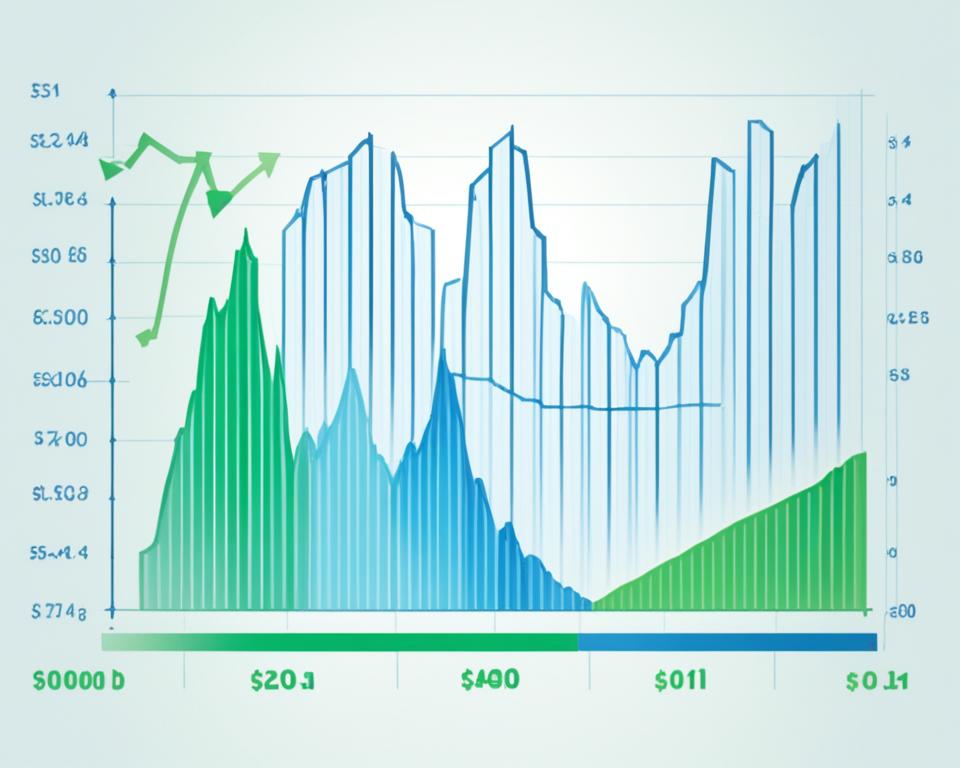
Role of Competitive Advantages
Companies with strong competitive advantages enjoy the power of dictating their product pricing in their respective markets. This ability to command higher prices directly attributes to the company’s ability to accumulate higher profits, thereby supporting increasing EPS figures. Coupling a strong brand with the provision of high-value services or products to consumers can further enhance this capability.
Growth Strategies: Organic Expansion vs Acquisitions
How a company chooses to expand also plays a vital role in augmenting the EPS. Whether the growth arises from organic expansion or through strategic acquisitions, it can contribute to the rising EPS. Organic expansion refers to internally driven growth through avenues like increased production, new product launches, or market proliferation. Acquisitions, on the other hand, involve external growth through the purchase of other companies. Both strategies, if wisely implemented, can enable higher earnings, directly impacting the EPS.
Impact of EPS on Dividend Growth
The EPS holds significant sway over the growth of dividends. As the EPS increases, companies have more earnings at their disposal. This allows them to pay out larger dividends to their shareholders while also channelling funds into their reserve or retained earnings. Thus, EPS serves as a financially sound basis enabling consistent and potentially rising dividend distributions, an essential characteristic of dividend stocks.
High Return on Equity (ROE) as a Sign of Sustainability
When assessing the characteristics of reliable dividend stocks, a key indicator to consider is the company’s return on equity (ROE). A high ROE indicates a company’s efficient use of its shareholders’ equity to generate profits, indicative of a sustainable business model. This efficiency can be a harbinger of a competitive advantage or a ‘wide moat’, making the company poised for sustained dividends.
Understanding the ‘Wide Moat’ Concept
In the context of investing, the concept of a ‘wide moat’ refers to a company’s enduring competitive advantage that protects it from competitors. This competitive edge, often manifested through innovative products, strong branding, or proprietary technology, allows the company to dominate its market sector, thereby warranting sustained dividends. A firm with a wide moat tends to have a high return on equity, reflecting its ability to effectively utilize its shareholders’ capital.
The Balance of Investment and Return
While ROE is an essential metric, it must be gauged in conjunction with the company’s investment strategy. Companies that aim for a high return on equity should exercise prudence in new investments to maintain or enhance their ROE. By striking a balance between investments and returns, a company can ensure continuous dividend payouts without sacrificing profitability.
What are the Characteristics of a Sustainable Dividend Stock?
In the complex landscape of dividend investing, knowledgeable investors understand that a company’s financial strategies can significantly impact the value and sustainability of their dividends. Specifically, two crucial factors often play a pivotal role: decreasing share count and strategic stock buybacks.
The Significance of Decreasing Share Count
When a company reduces its number of shares outstanding, this strategy usually indicates robust financial health and a commitment to boosting shareholder value. This decreasing share count inherently enhances earnings per share (EPS), allowing investors to claim a more significant stake in the company’s profits and future growth. This can be a strong signal of a sustainable dividend stock.
Strategic Stock Buybacks and Share Value
Alongside decreasing share count, savvy businesses often employ strategic stock buybacks to further cement their financial stability and commitment to shareholders. By purchasing their own shares when prices are low, these companies demonstrate fiscal responsibility, reinforcing their standing as sustainable dividend stocks. However, the key lies in the buyback strategy being strategic, ensuring its execution aligns with both market conditions and the company’s long-term business objectives.
In the table below, there’s a simple demonstration of how strategic stock buybacks can strengthen EPS over time:
| Year | Total Shares Before Buyback | Shares Bought Back | Total Shares After Buyback | Net Income | Earnings Per Share |
|---|---|---|---|---|---|
| 2020 | 1,000,000 | 50,000 | 950,000 | $1,000,000 | $1.05 |
| 2021 | 950,000 | 45,000 | 905,000 | $1,000,000 | $1.10 |
| 2022 | 905,000 | 45,250 | 859,750 | $1,000,000 | $1.16 |
In summary, the combination of a decreasing share count, coupled with strategic stock buybacks, often points to the potential for sustainable dividend payouts. As investors, understanding these strategic maneuvers can help you identify robust dividend stocks that enhance your investment portfolio’s long-term growth and stability.
Finding the Balance with Dividend Payout Ratios
Dividend payout ratios are a significant indicator of a company’s dividend sustainability. They give investors insight into how earnings are divided between shareholders’ dividends and company reinvestment. Let’s delve deeper into how maintaining a balance in the dividend payout ratio contributes to dividend sustainability.
Influence of Cash Flow on Dividend Payments
The lifeblood of any organization, strong cash flow is essential for supporting ongoing dividend payments. Consistent and robust cash generation underwrites a company’s ability to meet its dividend commitments while investing surplus funds back into the business. Understanding the intricate relationship of cash flow to payout ratios is paramount to a comprehensive dividend sustainability analysis.
How Payout Ratios Reflect Financial Health
A sustainable dividend payout ratio not only assures investors of returns but also mirrors company management’s financial prudence. Dividends that are too high might hint at an unsustainable strategy and a potential drop in future returns. On the other hand, dividends that are too low might point towards an undervaluation of shareholders. A balanced dividend payout ratio reflects a healthy give-and-take between financing dividends and reinvestment needs, which paves the way for a firm’s sustainable business longevity.
Tracking Dividend Growth History
A careful evaluation of a company’s dividend growth history can serve as a crucial tool for investors to understand the potential of a company to deliver increasing profits over time. An impressive track record of consistent annual dividend increases is indicative of a company’s capacity to generate higher amounts of excess cash flows.
As the dividend growth surpasses inflation rates, it contributes to a more significant and robust income stream for investors. Let’s delve deeper into the role of excess cash flows and the strategy of dividend reinvestment to comprehend how these components contribute to enhancing shareholder returns.
The Role of Excess Cash Flows
Excess cash flows serve as the lifeblood for a company intending to distribute dividends. The ability to generate higher amounts of these cash flows is integral to the sustainability of dividends. It allows the company to meet its shareholder obligations easily and consistently.
Companies with a strong operational performance often find themselves in a position to generate an abundance of excess cash flows. This, in turn, positively impacts their dividend growth history, as it allows them to persistently increase the dividend payout, adding another feather to their cap in terms of investor appeal.
Dividend Reinvestment and Income Growth
Reinvesting dividends could significantly turbocharge income. Compounding is a powerful financial concept, and when applied to dividends, it could generate substantial wealth over time. By opting for a dividend reinvestment strategy, investors can purchase additional shares, which in turn lead to greater dividends, creating a snowball effect of increasing returns.
The cumulative effect of reinvesting dividends subtly amplifies overall income growth. Therefore, as a strategy, investing in companies with a strong dividend growth history and reinvesting the received dividends can provide noteworthy long-term benefits, thereby augmenting shareholder wealth considerably.
Evaluating Dividend Stock Sustainability
Investing in dividends has been a time-tested strategy for income-oriented investors. However, the key to such an investment approach lies in the sustainability of the stocks one invests in. This is where the keyword evaluating dividend stock sustainability comes into the picture.
The process of evaluation involves a comprehensive assessment of a company’s financials and strategic approach towards growth and dividend distribution. This includes closely examining historical dividend payments, consistency of earnings, debt-to-equity ratio, and long-term growth prospects. Not all companies can deliver on these fronts. Hence, understanding and evaluating these factors form the crux of dividend investing.
Let’s delve deeper into each of these crucial aspects:
- Historical Dividend Payments: Reviewing past dividend payments offers insights into the company’s track record and the stability of its dividend payouts. An established history of consistent and increasing dividend payments is often indicative of a company’s dedication towards returning profits to shareholders.
- Consistency of Earnings: Earnings consistency is another essential factor to consider when evaluating dividend stock sustainability. Companies with fluctuating profits might not be able to maintain steady dividend payments. In contrast, those with a track record of stable earnings are usually in a better position to maintain and even raise dividends consistently.
- Debt-to-Equity Ratio: A company with a high debt-to-equity ratio may find it challenging to sustain dividends during periods of economic uncertainty. Therefore, it is crucial to examine this ratio to understand the company’s reliance on external financing and its ability to weather economic downturns while maintaining dividend payouts.
- Long-Term Growth Prospects: A company with robust long-term growth prospects can contribute to the sustainability of its dividends. Such companies can grow their earnings and, by extension, their dividends over time, thereby providing an upward trend in income for shareholders.
To assist in understanding these factors, below is an illustrative guide to evaluating dividend stock sustainability:
| Factor | Description | Importance to Dividend Sustainability |
|---|---|---|
| Historical Dividend Payments | Record of consistent and increasing dividends | Indicates dedication to returning profits to shareholders |
| Earnings Consistency | Record of stable earnings | Suggests ability to maintain and grow dividends |
| Debt-to-Equity Ratio | Measure of financial leverage | Gives idea about company’s ability to sustain dividends during economic downturns |
| Long-Term Growth Prospects | Estimated future earnings growth | Reflects potential for dividend growth over time |
In conclusion, evaluating dividend stock sustainability is a critical step in building a robust portfolio designed for consistent income. By understanding these four key factors – historical dividend payments, earnings consistency, debt-to-equity ratio, and long-term growth prospects – investors can better navigate the world of dividend stocks and select companies that can provide reliable income streams over time.
Spotting the Red Flags in Dividend Stocks
In the realm of dividend stock investing, vigilance is a preeminent virtue. Investors must be more attentive than ever to the red flags that could indicate potential sustainability issues with their dividend stocks. These warning signs often manifest themselves typically through high debt levels or incapability to withstand variable market conditions.
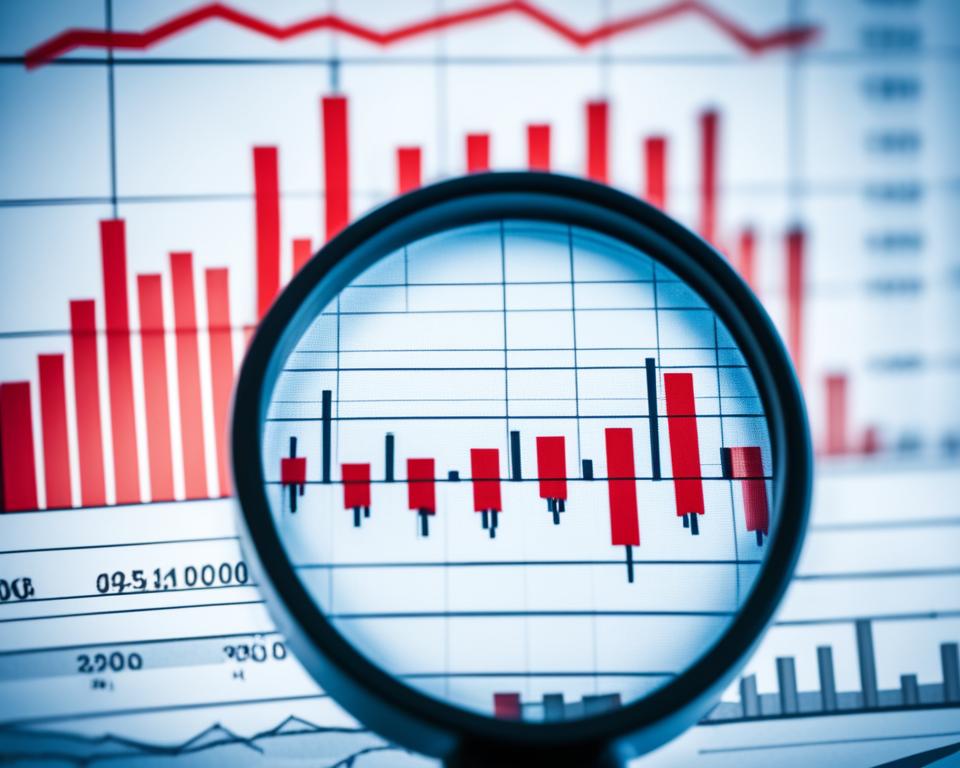
Debt Levels and Their Implications
One of the major red flags for investors is the company’s level of indebtedness. If debt levels are escalated, it can put a significant strain on the company’s ability to maintain consistent dividend payments. This pressure intensifies if the company is in a situation where its cash flows are being directed more towards servicing its debt obligations rather than making returns to its shareholders. Therefore, investors are advised to exercise caution and diligently analyse the company’s debt management approach while considering it for dividend stock investment.
Sustainability in Variable Market Conditions
Market conditions are always in a state of flux, influenced by numerous economic, political, and social factors. The adaptability of a dividend stock to sustain its payments under these ever-changing conditions can talk volumes about the company’s financial resilience and the management’s ability to uphold shareholder value during economic downturns. Therefore, keeping a close eye on how a stock responds to varying market conditions is essential in predicting dividend sustainability.
Socially Responsible Dividend Stocks: Merging Ethics with Earnings
With increasing awareness of ethical considerations in the financial world, the concept of socially responsible dividend stocks has gained momentum. Investors are now looking beyond just the profitability of a company and are evaluating its impact on the environment and society. Enter the world of Environmental, Social, and Governance (ESG) analysis – a practice that aids investors in identifying companies that offer sustainable dividends while forming a positive impact on society and the environment.
ESG Analysis in Dividend Investing
ESG analysis is a method where investors scrutinize companies based on their environmental, social, and governance practices. Socially responsible investors use this analysis to identify companies that do not only offer sustainable dividends but also contribute positively to society and the environment.
“Investing in socially responsible dividend stocks is about marrying profits with principles.”
However, the art of ESG investing is to identify companies that excel both in terms of financial performance and ethical standing.
Case Studies: Procter & Gamble, 3M Co., and Others
When it comes to reliable and socially responsible dividend stocks, Procter & Gamble and 3M Co. stand out as prime examples. Both companies have demonstrated sustained dividend growth while adhering to strong ESG practices.
| Company | Years of Dividend Growth | Yield | ESG Score |
|---|---|---|---|
| Procter & Gamble | 63 years | 2.41% | 74 |
| 3M Co. | 61 years | 3.23% | 78 |
These companies have successfully merged profitability with ethical management, showcasing the viability of integrating ethical considerations into dividend investing. As investors become more aware and proactive, the popularity and need for such investments will likely continue to rise.
Conclusion
In the realm of investing, understanding the characteristics of sustainable dividend stocks is an imperative for investors who aim for consistent income over time. A comprehensive comprehension of certain key traits aids investors in selecting stocks capable of delivering reliable dividends. These indicators include a rising earnings per share (EPS), notable return on equity (ROE), the practice of strategic share buybacks, maintaining balanced payout ratios, and affirming a robust dividend growth history.
Deeper analysis of these traits, partnered with a keen focus on environmental, social, and governance (ESG) factors, allows investors to create a diligent dividend stock selection strategy that aligns with both their financial objectives and ethical values. The growing significance of dividend sustainability in the creation of a resilient investment portfolio warrants a thorough understanding of these factors. The application of ethical investing as an adjunct to their strategies provides investors a monetary advantage and the reassured conscience of contributing beneficially towards society.
Hence, in summary, investing for consistent income coupled with an emphasis on sustainability solidifies the role of dividend stocks as an essential component in an investor’s portfolio. As we navigate the investing world, the focus on dividend sustainability and ESG investing will continue to shape and direct our decisions in the realm of dividends. The rewards are plentiful – financial stability, persistent income, and a positive impact on society at large.
FAQ
What are the characteristics of a sustainable dividend stock?
Some key features of a sustainable dividend stock include a history of rising earnings per share (EPS), a high return on equity (ROE), fewer outstanding shares due to strategic stock buybacks, balanced dividend payout ratios, and a strong history of dividend growth. Companies must demonstrate competitive advantages, provide value to consumers, and offer distinct, profitable products or services to sustain these features. Evaluation of these characteristics will aid investors in selecting sustainable dividend stocks.
How does one approach sustainable dividend investing?
Successful sustainable dividend investing involves a comprehensive understanding of key stock performance indicators that suggest an ability to maintain and grow dividends over time. Evaluating factors like EPS growth, ROE stability, share count reduction, and balanced dividend payout ratios can guide investors towards sustainable dividend stocks. It’s crucial to align these evaluations with the investor’s long-term financial goals and market understanding.
What factors indicate that a dividend stock is sustainable?
A sustainable dividend stock displays consistent dividend payments without compromising its financial health and growth potential. Financial analysis of company cash flows, debt levels, profitability, and growth potential is paramount to determining dividend sustainability. Equally important is the company’s strategic approach to growth and shareholder distribution, which underscores its commitment to balancing growth and shareholder returns.
How important is a rising EPS in a dividend stock?
A rising EPS, indicative of a company’s profitability, is a significant factor in a sustainable dividend stock. A company with healthy competitive advantages can leverage their brand strength to see rising prices and deliver value, supporting dividend growth. Growth strategies, be it organic expansion or strategic acquisitions, contribute to the rising EPS and, in turn, enable increasing dividend payments.
How does High ROE signify sustainability in a dividend stock?
High ROE indicates a company’s capability to generate profits from shareholders’ equity, suggesting a sustainable business model with a competitive edge or ‘wide moat’. Such companies usually have strong cash-flow generation, but they must be careful in their new investments to sustain or grow ROE. A good balance between investment and returns can support continuous dividend payouts without compromising profitability.
What role do stock buybacks play in a sustainable dividend stock?
Companies often engage in stock buybacks, reducing the number of shares outstanding, signaling confidence in their financial stability, and thereby shaping the characteristics of a sustainable dividend stock. A decreasing share count enhances EPS and augments shareholder value by granting investors a larger stake in the company. Such buybacks should be strategically executed at lower share prices to contribute to fiscal responsibility and sustainable dividends.
How do payout ratios reflect the financial health of a dividend stock?
Dividend payout ratios striking a balance between reinvestment in the business and distributions to shareholders are indispensable hallmarks of sustainable dividend stocks. Consistent cash generation can support ongoing dividend payments. Payout ratios, therefore, are indicative of a company’s prudent management of its financial health, signaling its capacity to pay dividends without resorting to excessive external financing or compromising business longevity.
How significant is the role of excess cash flows in tracking dividend growth history?
The sizable role of excess cash flows cannot be understated in tracking dividend growth history. Continual growth in dividends can surpass inflation rates contributing to a more potent income stream for investors. A consistent increase in excess cash flows demonstrates strong operational performance integral to dividend sustainability. Further, dividends reinvestment strategies can stoke overall income growth and returns for shareholders.
How should we evaluate the sustainability of a dividend stock?
Evaluating the sustainability of a dividend stock involves thorough analysis of the company’s financials and strategic growth approach to shareholder distribution. This would include scrutiny of historical dividend payments, consistency of earnings, examination of the debt-to-equity ratio, and understanding its long-term growth projections. Such an evaluation helps investors single out stocks with the potential to consistently grow dividends, ensuring a reliable income stream.
How can an investor spot potential red flags in dividend stocks?
Mindfulness of high debt levels is important as it can pose a threat to a company’s ability to maintain dividend payments, especially if cash flows are channeled towards debt obligations instead of shareholder returns. The ability of a dividend stock to sustain payments in varying market conditions is also a strong indicator of its financial resilience, illustrating management’s adaptability in preserving shareholder value during downturns.
What characteristics do socially responsible dividend stocks possess?
Socially responsible dividend stocks let investors harmonize their ethical considerations with their earnings goals by investing in companies practicing positive environmental, social, and governance (ESG) measures. Companies like Procter & Gamble and 3M Co. have exhibited consistent dividend growth while adhering to commendable ESG practices, demonstrating the feasibility of incorporating ethical considerations into dividend investing.



